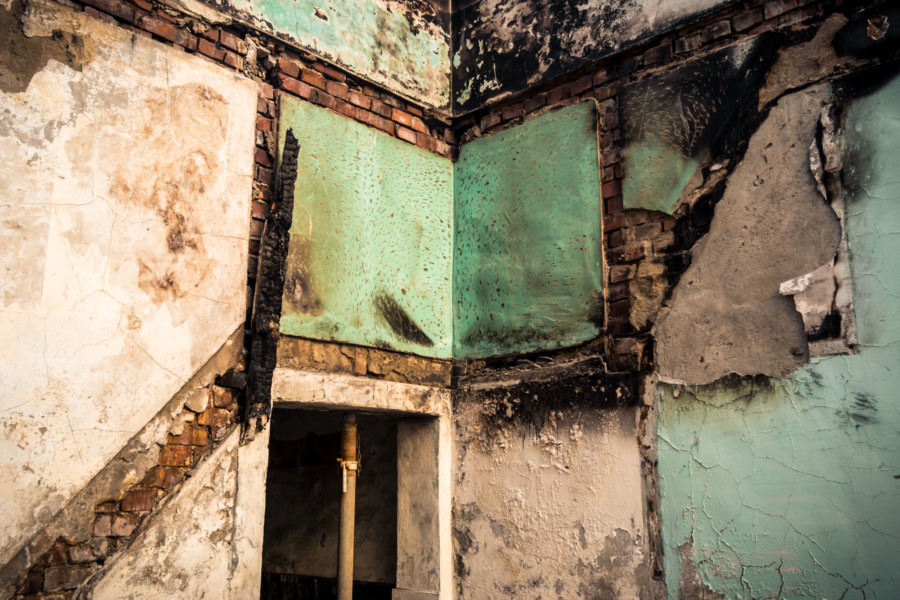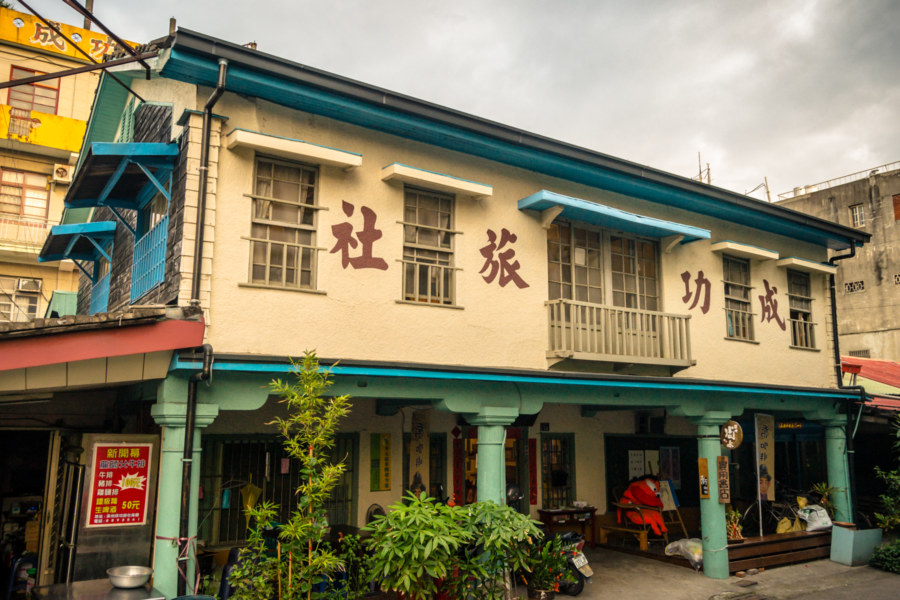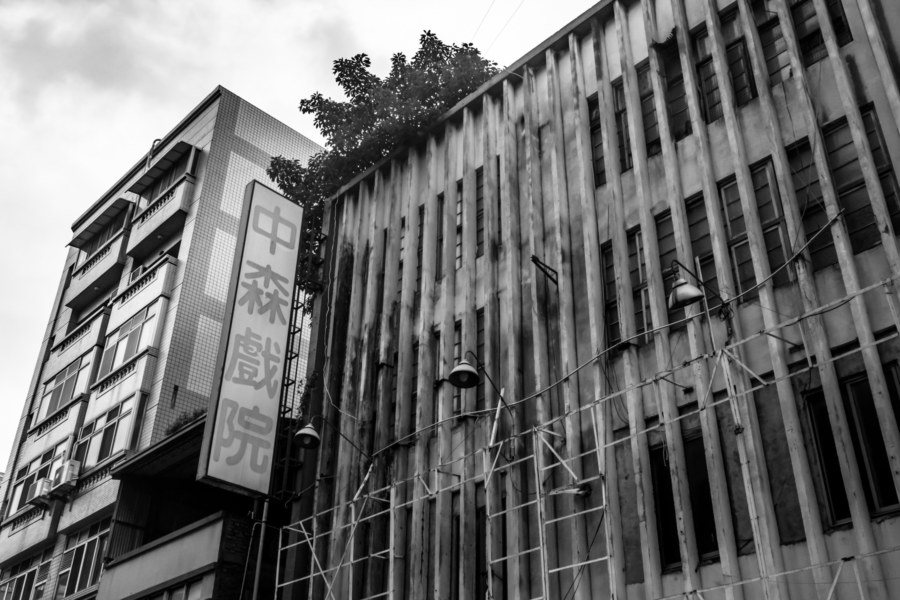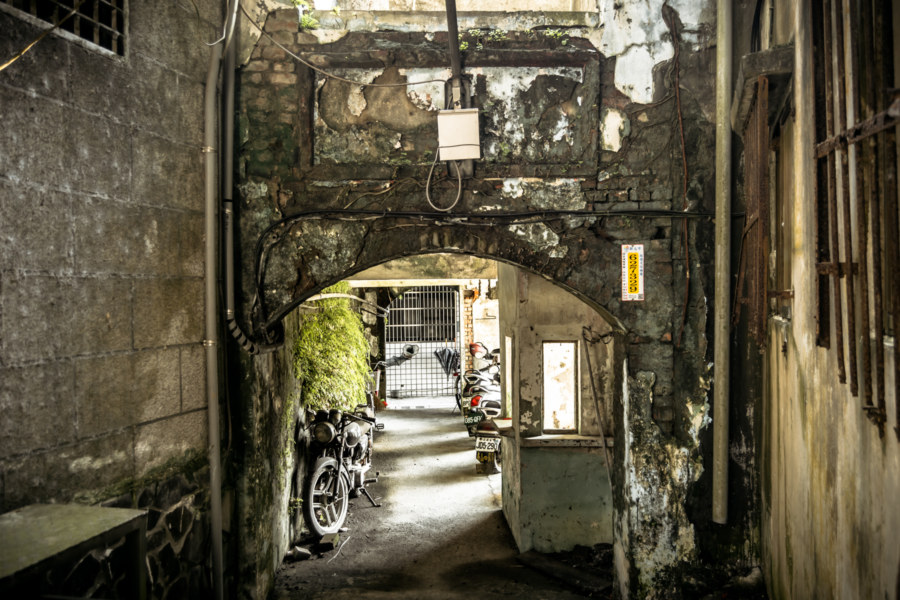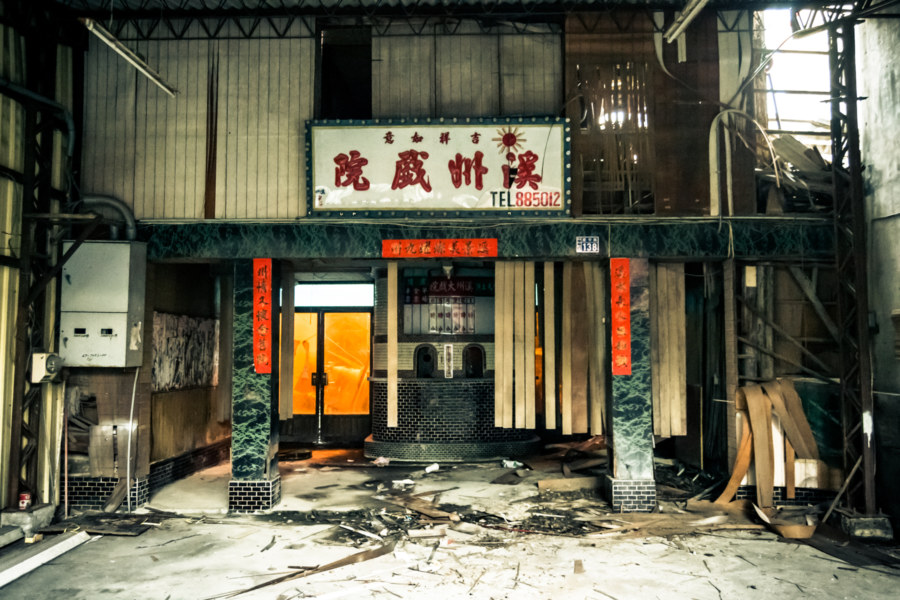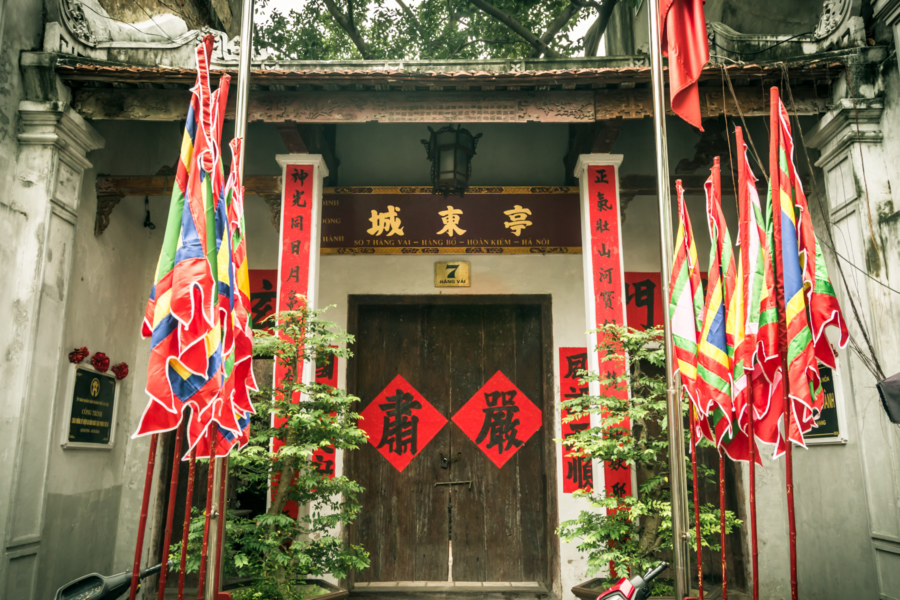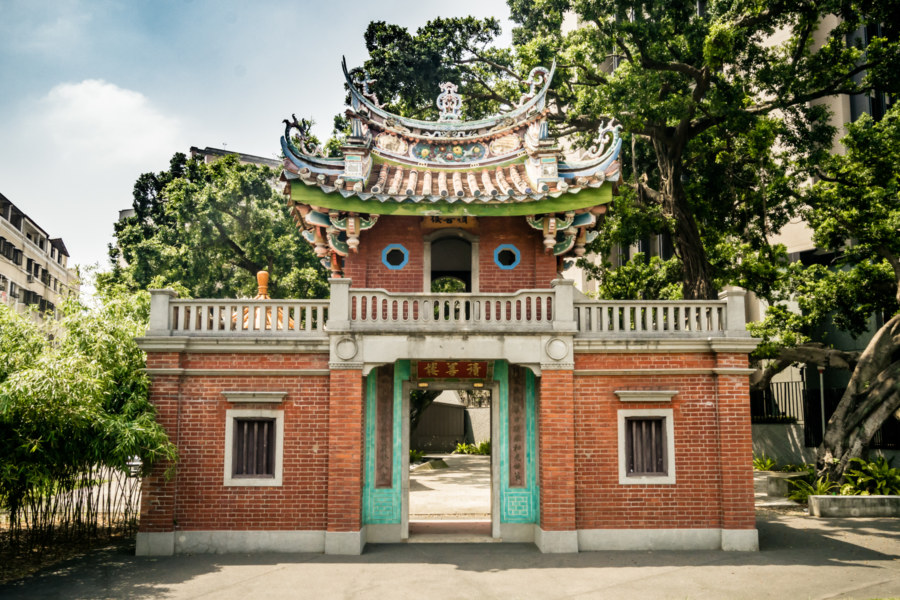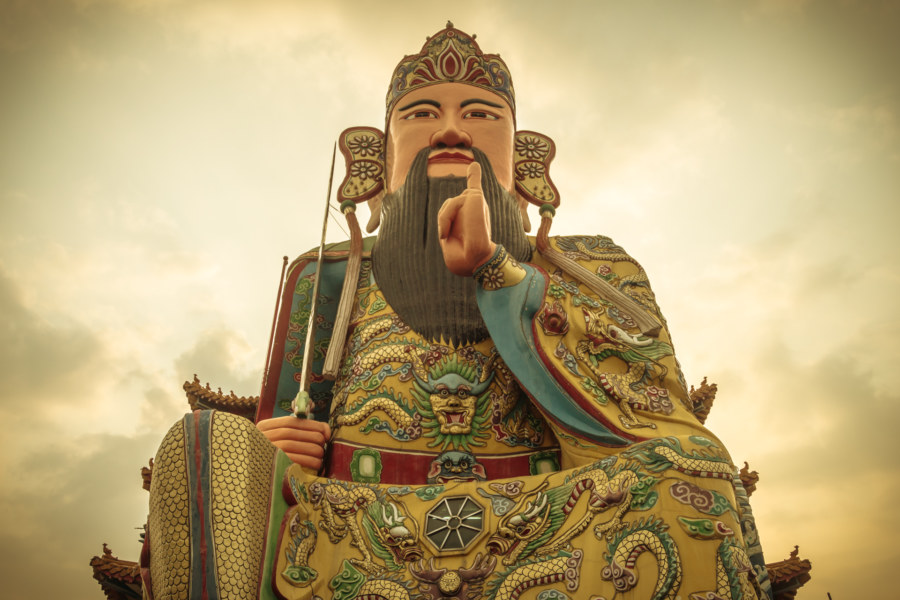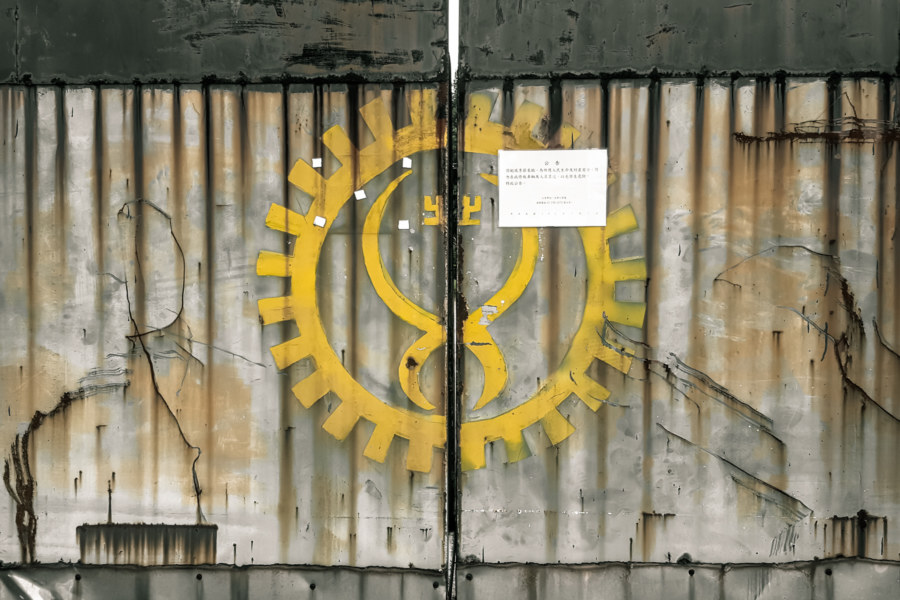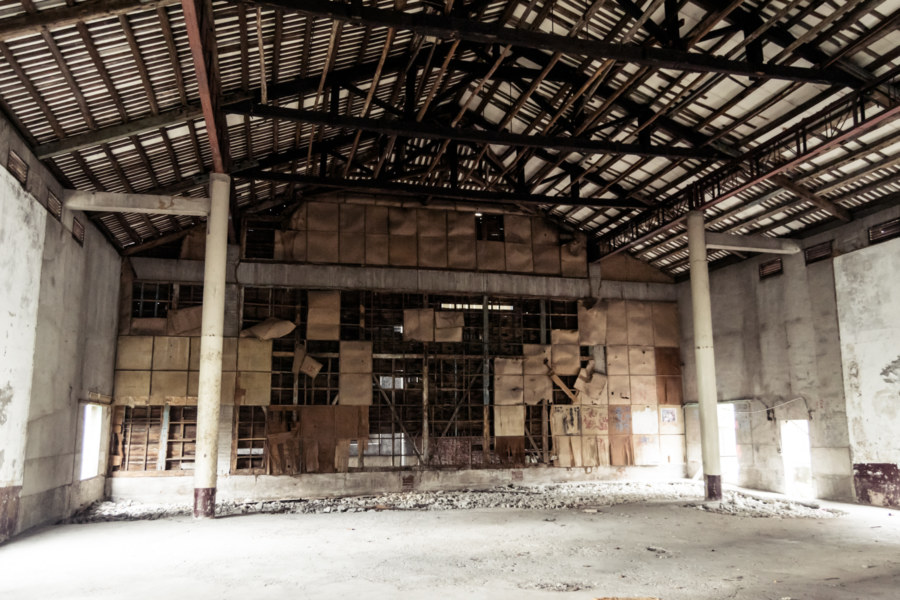The south side of central Taichung is undergoing massive changes with the opening of the new Taichung Station. Formerly one of the most rundown parts of urban Taiwan, it is now the front of the station, and many old and decrepit buildings like this house on Dàyǒng Street 大勇街 are being torn down to make way for lucrative new developments. It is a minor ruin, one for which I have uncovered no specific history, although a little sleuthing around on Google Street View indicates the building was still intact in February 2015 and boasted a simple signboard for a tea shop: 茶點複合式冷飲. Judging by the construction style I would guess this place dates back to the 1960s, give or take a decade. Gathered here are several photos shared more for their aesthetic appeal than intrinsic historic value.
Geosophy is "the study of the world as people conceive of and imagine it". A lot of what I share is based on my subjective experiences of the places I go. Anything found here is experiential geography concerned with a specific place, a fundamentally flawed mapping of the world as seen through my eyes (and camera lens). See also: regions.
Adjacent Terms
Xizhou Chenggong Hostel 溪州成功旅社
During a recent visit to Xizhou, a small rural township in southern Changhua, I made a brief stop to check out the historic Chénggōng Hostel (成功旅社](https://www.facebook.com/pages/成功旅社農用書店/774365992596884)). I had no idea what to expect, having learned of its existence while browsing Google Maps in search of points of interest, and was pleasantly surprised by what I found there. It is privately owned and operated but they’ve gone to great lengths to preserve the building, transforming it into a tourist attraction and community space. The ground floor is home to a shop showcasing local products and a dual-purpose agricultural library and event space. Upstairs is something of a museum, lightly furnished with rickety beds and tatami mats. The floorboards creak and there is a mustiness about the place that makes it feel genuinely old. It wasn’t difficult to imagine what it might have been like half a century ago in the midst of the sugar boom.
Zhongsen Theater 中森戲院
Taichung is changing fast. The historic downtown area, formerly one of the worst examples of inner city blight in the nation, is presently undergoing a massive urban renewal effort. Some decaying and disused commercial buildings have been restored, many more await their fate, and others have been demolished before I’ve even had a chance to document their interiors. Zhōngsēn Theater 中森戲院 belongs to this last category: it came down after I shot a preliminary set of photos but before I had a chance to sneak inside. You have to move fast to capture these small histories in their unmaking.
Shuangxi Donghe Theater 雙溪東和戲院
Dōnghé Theater 東和戲院 is an obscure ruin in Shuangxi, a former mining town of approximately 8,000 residents in the mountains of eastern New Taipei. Despite its diminutive size and relatively remote location, Shuangxi has a colorful history extending back to the late Qing dynasty era. Its prime location at the confluence of Mudan Creek and the eponymous Shuang River made it an ideal transshipment point for people and goods traveling to and from Ruifang. The surrounding hills also contained rich deposits of gold and coal deposits, sparking a mining boom that peaked in the mid-20th century with dozens of mines and more than 30,000 miners in the area. Two theaters were in business in the 1950s, but the local entertainment industries declined along with the mining industry, and only the ruins of Donghe Theater remain to provide a glimpse into the past. Although it isn’t formally protected, the site has been tidied up and anyone is welcome to wander in and take a look.
Xizhou Theater 溪州戲院
Some people are into urban exploration for the optics—they love visiting the most visually-impressive places and taking cool photos—but I’m just as interested in documenting history and solving puzzles. Animated by curiosity, I have become proficient in navigating the Chinese language web in search of leads. Not all of these turn out to be something interesting but I enjoy those rare days where I set out into the countryside and see how many candidate sites I can knock off my list. This is what originally brought me to the gates of the humble Xizhou Theater 溪州戲院 in the small town of Xizhou, Changhua.
Dinh Dong Thanh
One of the more interesting temples I stepped inside on a recent visit to the Old Quarter of Hanoi is the recently renovated Đình Đông Thành (亭東城, loosely: “East City Pavilion”). Having explored many temples in Taiwan over the years I was familiar with some of what I found there—but much of it was completely foreign to me. Looking up information after the fact hasn’t been educational; there are no English language resources about this temple and I haven’t got the same knack for finding information in Vietnamese as I have with Chinese language resources about Taiwan. So, if you’ll pardon my lack of local expertise, I’m going to share a few photos from this relatively obscure temple and attempt to puzzle through some of what caught my eye.
Jishan Gatehouse 積善樓
Jīshàn Gatehouse (積善樓; sometimes written as Chishan or Chijhan) is a minor historic building not far from Taiyuan Station (太原車站) in Beitun, Taichung. Originally this site was occupied by the residences of the Lài (賴) family, immigrants from Zhangzhou in China, who made their home here in 1897. Decades later they funded the construction of this unusual gatehouse on the recommendation of a fengshui (風水) master; the name of the building literally translates to “accumulate goodness”. The design and some of the materials are Chinese but the structure also shows western influences and craftsmanship as filtered through Japan. Five banyan trees surrounding the gate are the only other legacy of the homes that once existed here. Nowadays the area is a city park.
Hengwen Temple 衡文宮
Héngwén Temple 衡文宮 is located on the south side of Yuanlin, a mid-sized city in Changhua, Taiwan. Completed in 1976, this temple is mainly notable for its 72 foot-tall statue of Xuán Wǔ 玄武, literally “Dark Warrior”, alternately known as Xuán Dì 玄帝 (“Dark Deity”) or Xuántiān Shàngdì 玄天上帝 (“Dark Heavenly Deity”) among many other names. The statue itself is a hollow structure containing several additional floors filled with murals depicting the origins of Xuan Wu as well as various small shrines. A similarly oversized statue of Xuan Wu can be seen on the famous Lotus Pond 蓮池潭 in Zuoying, Kaohsiung, and there’s probably several more scattered around Taiwan, but this one is apparently the largest of its kind. Such claims are often difficult to verify as pretty much any temple with a big statue is likely to say the same thing.
Traces of an Army Maintenance Depot
Xinyi is now one of the most expensive and upscale parts of Taiwan but it hasn’t always been that way. Decades ago it was an undesirable area on the edge of the city with a significant military-industrial presence, traces of which still remain if you know where to look. The open expanse of parks and parking lots around the intersection of Xìn’ān Street (信安街) and Wúxìng Street (吳興街) immediately to the west of Taipei Medical University (臺北醫學大學) is one such trace.
Xinpu Xinxing Theater 新埔新興戲院
Recently I visited Xinpu, a small Hakka town in the hills of Hsinchu, Taiwan, alongside fellow photographer and blogger Josh Ellis. I was curious to confirm reports of a historic theater along the former Entertainment Street 娛樂街 but the location in my notes was occupied by a construction site. Forging on, we continued down the road and were soon rewarded by the sight of something that I wasn’t expecting: Xīnxīng Theater 新興戲院. In hindsight it wouldn’t be an “entertainment street” without more than one cinema, would it?
